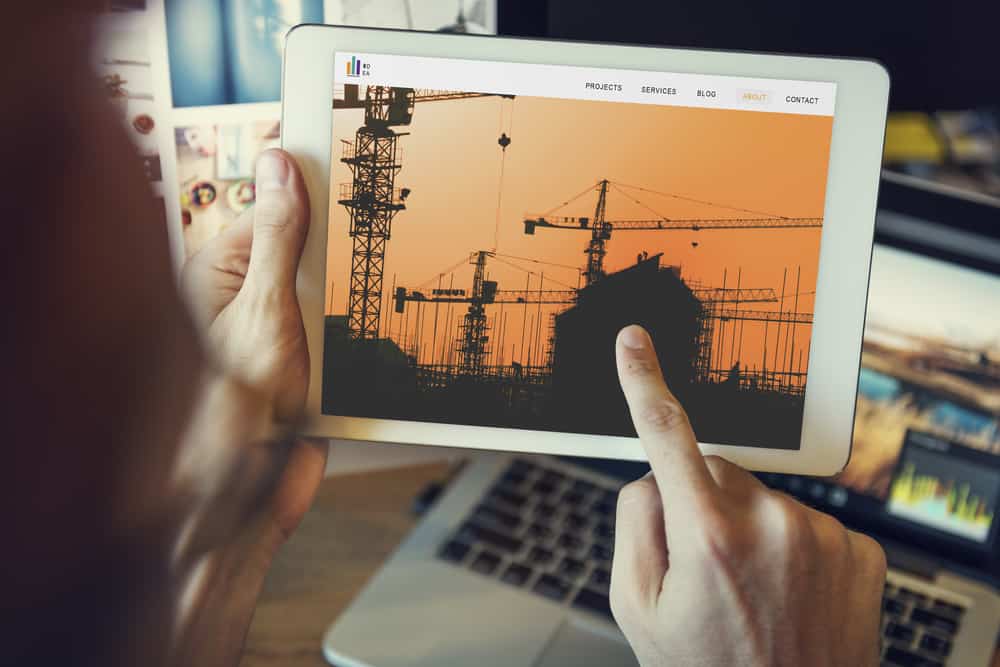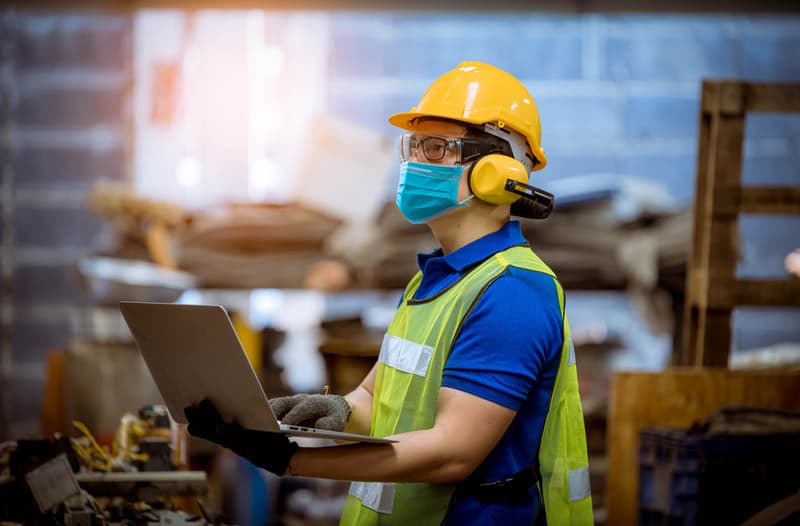- The future of architecture – unprecedented possibilities
- Architectural engineering made easy
- Virtual reality is revolutionising construction
- The traditional ’job-site walk’ will soon become a thing of the past
Imagine an artificial world that you can observe, walk through, reach out to touch objects and see everything around you respond in real time. This is immersive virtual reality and these spaces are created using a combination of computer graphics, wireless tracking technology, headsets, HD projectors, polarised glass and more, all working together to create interactive and real-life experiences. The world of 3D virtual design and engineering is a fast growing field and there’s some seriously forward thinking happening in these fields.
Virtual reality technology has seen rapid developments in recent years and this is most apparent in the architectural, engineering and construction industry. Every design will soon be made using virtual reality; enabling the user to fully immerse himself in a 1:1-scale, 3D (BIM) model which can be manipulated and provides an incredibly accurate sense of presence in a space that’s yet to be built.
The future of architecture – unprecedented possibilities
Within five years, virtual architecture will be as convincing as the real thing. Ty Hedfan (meaning: ‘hovering house’), is a house in Wales that was designed by Featherstone Young Architects. Using plans and photos found on the Internet, Oliver Demangel, Design Director at London based 3D-imaging company IVR Nation, created a 90% accurate VR model of the house. This model shows how virtual reality will revolutionise how architects work. In the demo of Ty Hedfan, the visitor is able to open and close doors, switch the lights on and off and reposition objects. You can also change materials such as wall paper and flooring and experiment with all kinds of environmental elements such as lighting, weather and surroundings. With virtual reality, you can create a series of walk-through movies of a building, but you need a VR headset such as the Oculus Rift to really get an idea of how convincing the virtual model is. Architects who have used 3D headsets say it’s like a full immersion that completely tricks the brain. Demangel says “virtual reality will become an essential tool for architects. This technology is going to be so precise, you’re going to be like a magician. You’ll be able to change the world around you like a god. When architectural VR tech matures, it’s going be more powerful than cocaine.”
Architectural engineering made easy
Areas where construction is to take place need to be surveyed; government codes and environmental factors need to be taken into consideration. Before construction starts, the structural design of a building needs to be safe and the engineer must make sure the design accounts for movements and forces caused by external factors such as weight, wind and temperature. With virtual reality, a site can be surveyed remotely using a drone and a VR headset. This will enable the engineer to carry out a physical survey of the property or the building site. VR can help the engineer with 1:1 scale of interior spaces to survey the location of building systems such as such as HVAC (heating, ventilation and air conditioning), electrical, plumbing, fire and lightening protection as well as architectural acoustics.
Virtual reality is revolutionising construction
The construction industry is known for having very low profit margins and low levels of efficiency. Building a construction project in a virtual reality environment can be extremely useful in this industry. Within a VR space, teams are able to test out a number of stages in the building process without the cost and time factors of regular, real life testing and it will help reduce construction errors. The final structures can be rendered in 3D and the construction workers can experience and explore the space as they would in real life. Another important factor of the construction process is the fact that the viability of an architectural design needs to be tested thoroughly. Up until recently, the viability of a structure could only be tested through scale models and human judgement. As scale models can’t completely simulate the environmental factors that a structure is subjected to and human judgment can be inaccurate and flawed, virtual reality offers incredible possibilities.
Below is a list of virtual reality tools that are set to revolutionise the architecture, engineering and construction space and will completely disrupt the workflow in this industry.
PrioVR motion capture device
The motion capture device PrioVR helps you experience a VR environment through natural body movements instead of using a keyboard and a mouse. PrioVR is perfect for virtually opening doors, demolishing walls, moving cranes around or building in real time. The device works via body sensors that transmit information about your body’s movements back to the VR software.
Matterport 3D camera and capture app for iPad
The fast and portable Matterport Pro 3D-camera and capture app for iPad is able to scan a space of 90 square metres within half an hour, producing high-quality immersive 3D-models. Matterport’s distribution and management platform allows you to share your 3D-models with others in your team. Using the Matterport Cloud, your 3D spaces can be viewed from anywhere in the world on mobile and desktop devices.
Google Glass VR headset
Google Glass runs Google applications as well as many other third-party applications and displays these on a headset. Glass uses natural language instructions such as ‘take photo’, ‘record video’, ‘how tall is that building’, to easily control the device. It displays maps and enables you to share photos and videos. The device opens big doors for architecture and construction. Imagine walking down the street and being able to tell the size of buildings and angular distances between architectural features. If you are going to be designing a new building or even a remodel, you will also want to get a sense of the area in which your creation will be built – which is all possible with Google Glass.
Roto motorised chair
This spinning chair makes virtual reality even more real. With the Roto motorised chair, you can explore a virtual reality environment in various directions, without cables tangling. Instead of using your head to navigate a space, the Roto chair enables the user to rotate and turn around in a VR environment, which is ideal for coordination meetings or for moving around a space in Navisworks.
VRSCA – simulating without the lag
The VRSCA, developed by Pocketcake, is three times more powerful than your average high-performance computer and enables eight people to experience virtual reality simulations simultaneously, wearing VR headsets such as the Oculus Rift. Not many computers are equipped to handle the vast volumes of data in a typical VR simulation file. VRSCA, however, is capable of processing models at eighty frames per second. A large model with dynamic lighting and defined interior would certainly make the average high-powered computer crash. VRSCA, however, runs the simulation without overheating or lag and is even capable of remotely hosting up to 58 viewers in different locations.
3DiO virtual immersive environment
As global teams are more and more prevalent, researchers at Stanford CIFE have created a virtual, immersive meeting place which is sure to be a breakthrough in the architecture, engineering and construction industry. The VR environment is based on the idea of an Obeya, the Japanese term for ‘big room’ or ‘war room’. 3DiO is a refreshing change for anyone who has ever attended a long and boring BIM coordination meeting. Even though the 3DiO is still in its early creation stages, it’s definitely worth keeping an eye on.
Touchable holograms
As a result of smart engineering by the Bristol University’s research team, virtual reality will soon be expanding to include touch. Imagine being able to feel different textures, making it easier to choose exactly the right materials for your interior design project. Using this technology, schlepping around heaps of samples and showroom material will soon be a thing of the past – a ‘touchable’ holographic projection will do the trick.
Microsoft HoloLens
With Microsoft’s HoloLens you can use augmented reality to create 3D objects within a real live space – as opposed to virtual reality, which focuses on virtual experiences. It does this by using light to create holographic images. The HoloLens is also the first holographic computer that runs Windows 10. It is also completely untethered; no PC connection, phones or cables required. HoloLens delivers a mixed reality of physical and digital worlds and enables you to pin holograms in a real environment.
Daqri Smart Helmet
The Daqri smart helmet is similar to what Microsoft HoloLens and Google Glass are able to do, but Daqri is perfectly suited to industrial applications. With inertial measurement tools, high resolution depth sensors and 360-degree navigation cameras, the helmet creates an incredible augmented reality experience to help people on the jobsite to complete their projects faster and more efficiently.
3D Laser scanner
With a 3D laser scanner, laser beams are used for measuring the distance of practically any point in virtually each direction and in any type of environment. The point and distance data gathered via the scanner can be used to create 3D-models. The 3D-laser scanner has endless applications, including environmental assessment, engineering, architecture and construction.
The traditional ’job-site walk’ will soon become a thing of the past
Virtual reality makes it possible to convert building and architectural projects into a 3D-environment which is extremely useful for seeing the space and proportions instead of having to imagine them. Firms can fly drones around, lasers can scan an area, upload the information to a virtual reality headset, giving the traditional ‘job-site walk’ a completely different meaning. When it comes to construction, making any type of alteration once a building is under construction is not only time consuming but very expensive as well. With virtual reality, changes can easily be made before the actual construction work has begun. Projects can become completely interactive as you walk around and observe the recreated environments with hyper-realistic finishes. Virtual reality offers endless possibilities in terms of interacting with a project. With a single gesture you can hide, create or modify walls, windows, doors, light conditions, furniture and decorative items.









